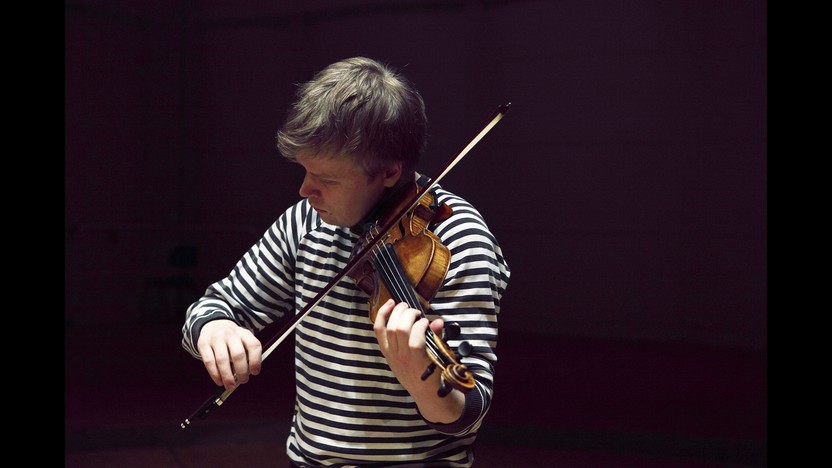Mozart’s 40th Symphony with Pekka Kuusisto



Dancers in the court of King Louis XIV imported the English country-dance in the late 17th century, and the style (renamed contredanse) soon joined the native minuet as a ballroom favorite in France and beyond. Mozart wrote his first example while traveling in Rome as a teenager, and he composed some three-dozen more, up until the last year of his life.
Such dance music was in high demand during Vienna’s Carnival season each January and February, and Mozart’s Six Country Dances from January of 1784 must have been meant for one the city’s many formal balls. All six examples share the dance’s typical two-beat meter and repeating phrase structure, plus No. 2 in E-flat adds the surprise of a contrasting section using the three-beat tempo of a minuet.
Aaron Grad ©2019
Shrink (Concerto for Violin and Strings) is in three movements. Each movement obsesses over certain intervals: the first, ninths; the second, sixths; and the final, a tiny set of anxious intervals between unisons and fourths. The overall structure suggests an intensifying focus on these small building-blocks, a process which is reflected in the speed of each movement. The first proceeds quickly, becomes aggressive, and dissolves into small fragments. The second movement is slow and taut, with a looped sequence of chords whose character becomes increasingly thick and heavy. The last movement is fast, nervous and scattered, with occasional giant unisons coming in and out of focus. Shrink is dedicated to Pekka Kuusisto.
Nico Muhly ©2019
Paradisfåglar (Birds of Paradise) was originally written for string orchestra and was premiered by Musica Vitae in Fall 2008. Paradisfåglar II, the 2013 version for orchestra, was commissioned by and dedicated to the Vasteras Sinfonietta. It was premiered at the Vasteras Concert Hall in September 2013.
Paradisfåglar was inspired by one of BBC’s Planet Earth films about the strange and beautiful birds of paradise. Their many different colors, the way they fly and the way the sound and sing.
Andrea Tarrodi ©2013

Wolfgang Amadeus Mozart wrote his three final symphonies in the span of eight weeks during the cash-strapped summer of 1788, when he was reduced to pleading with friends for loans, moving his growing family to the suburbs, and pursuing dead-end leads for his music. Whatever opportunity prompted the symphonies seems not to have panned out, and he probably didn’t hear all three before he died. He did revisit the G-minor symphony at some later point to add clarinets and make other adjustments, suggesting that he found an audience for that one at least.
The Symphony No. 40 in G Minor was only the second example that Mozart set in a minor key, and it was a world apart from the Symphony No. 25 that he wrote as a seventeen-year-old. This bigger, bolder, proto-Romantic symphony begins with a peculiar and essential quirk of phrasing that assigns the violas to quiver through one measure of bare accompaniment. When the violins enter a moment later with a theme that sighs three times before leaping up, there is a subtle rub between what our ears hear as the strong beat and the underlying architecture of the phrase. The result is a persistent and restless feeling of propulsion, as if each phrase must scrabble forward to stay ahead of the surge.
The Andante second movement is the only portion of the symphony that moves away from the turbulence of G-minor, and even here patterns of hiccupping rhythms and delayed resolutions recall the stormy first movement. The Menuetto is unusually grave for the portion of a symphony that often serves as a light diversion, with respite only coming in the contrasting trio section. The finale, with its heated dialogue of soft and loud phrases, embodies the passion and drama that Mozart honed on the operatic stage, most recently in Don Giovanni.
Aaron Grad ©2025
Get driving directions and find nearby parking.
Find dining options close to the venue.
View seating charts to find out where you'll be seating.
Get driving directions and find nearby parking.
Find dining options close to the venue.
View seating charts to find out where you'll be seating.
